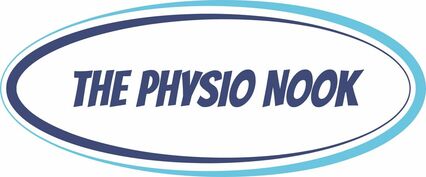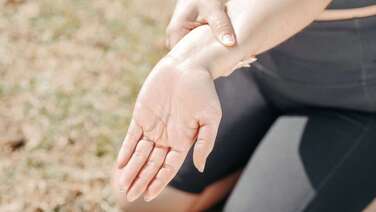"Mummy's thumb"- DeQuervains tenosynovitis
Mummy’s Thumb is a nickname given to the often painful and debilitating condition known as DeQuervain’s Syndrome. The nickname is appropriate as it is estimated that up to 50% of new mothers suffer with DeQuervain’s, but it can manifest in anyone (male or female) who engages in repetitive hand, wrist and thumb movements, such as gardening, knitting, cooking, carpentry, plumbing, lifting a baby or playing a musical instrument, among others.
What causes it?
When you grip, grasp, pinch or clench anything with your hand, 2 major tendons running from the forearm to the thumb are activated. They are Abductor Pollicis Longus (APL) and Extensor Pollicis Brevis (EPB). These tendons usually travel freely at the base of the radial aspect of the thumb and form a border of the anatomical snuff box. In DeQuervain’s Syndrome, the tendon sheaths become irritated and restrict movement of the tendons, causing pain.
It is most common for this condition to develop following an increase in activities that places stress on these tendons, through things as varied as racquet sports, rowing, ten pin bowling, or the activities mentioned earlier.
What about the Mummys?!
Many mothers lift their infants and small children by putting their hands under their armpits. This repeated stress on the tendons with the thumb and index finger in the shape of an “L” causes the pain and inflammation. Similarly, cradling the infant’s head with the hand in the “L” shape can cause further irritation. If there is concern that these habits may be causing or aggravating the condition, the mother (or father) needs to be made aware of it and encouraged to try different lifting techniques to avoid a long term issue.
Diagnosis…
A thorough subjective and objective assessment is usually enough to confirm the presence of DeQuervain’s Syndrome. The pain focus is at the radial aspect of the base of the thumb but can radiate up the forearm or into the thumb itself as it worsens. Finkelsteins test will be positive and there will be tenderness and possibly swelling on palpation of the tendons.
How do we treat it?
Unfortunately this is another case where there is no substitute for rest from aggravating activities. When this isn’t possible, a wrist and thumb brace and/or taping is needed. As mentioned before, modifying lifting or gripping techniques is beneficial, as is regular ice packs and either an oral or topical anti-inflammatory medication in the short term.
Most cases (particularly if caught early on) will respond to this education and physiotherapy modalities such as massage, wrist and thumb mobilisations, local electrotherapy, and then once pain begins to ease, a stretching and strengthening program of the forearm, wrist and hand to fully recover and minimise the chances of a recurring condition.
I hope this summary will help you or someone you know. As always, we are here at The Physio Nook to help out with any musculoskeletal disorders you may have, thumb or otherwise! Feel free to call us, email, or drop in for a great service.
Paul Woodward
Principal Physiotherapist
The Physio Nook.
When you grip, grasp, pinch or clench anything with your hand, 2 major tendons running from the forearm to the thumb are activated. They are Abductor Pollicis Longus (APL) and Extensor Pollicis Brevis (EPB). These tendons usually travel freely at the base of the radial aspect of the thumb and form a border of the anatomical snuff box. In DeQuervain’s Syndrome, the tendon sheaths become irritated and restrict movement of the tendons, causing pain.
It is most common for this condition to develop following an increase in activities that places stress on these tendons, through things as varied as racquet sports, rowing, ten pin bowling, or the activities mentioned earlier.
What about the Mummys?!
Many mothers lift their infants and small children by putting their hands under their armpits. This repeated stress on the tendons with the thumb and index finger in the shape of an “L” causes the pain and inflammation. Similarly, cradling the infant’s head with the hand in the “L” shape can cause further irritation. If there is concern that these habits may be causing or aggravating the condition, the mother (or father) needs to be made aware of it and encouraged to try different lifting techniques to avoid a long term issue.
Diagnosis…
A thorough subjective and objective assessment is usually enough to confirm the presence of DeQuervain’s Syndrome. The pain focus is at the radial aspect of the base of the thumb but can radiate up the forearm or into the thumb itself as it worsens. Finkelsteins test will be positive and there will be tenderness and possibly swelling on palpation of the tendons.
How do we treat it?
Unfortunately this is another case where there is no substitute for rest from aggravating activities. When this isn’t possible, a wrist and thumb brace and/or taping is needed. As mentioned before, modifying lifting or gripping techniques is beneficial, as is regular ice packs and either an oral or topical anti-inflammatory medication in the short term.
Most cases (particularly if caught early on) will respond to this education and physiotherapy modalities such as massage, wrist and thumb mobilisations, local electrotherapy, and then once pain begins to ease, a stretching and strengthening program of the forearm, wrist and hand to fully recover and minimise the chances of a recurring condition.
I hope this summary will help you or someone you know. As always, we are here at The Physio Nook to help out with any musculoskeletal disorders you may have, thumb or otherwise! Feel free to call us, email, or drop in for a great service.
Paul Woodward
Principal Physiotherapist
The Physio Nook.


